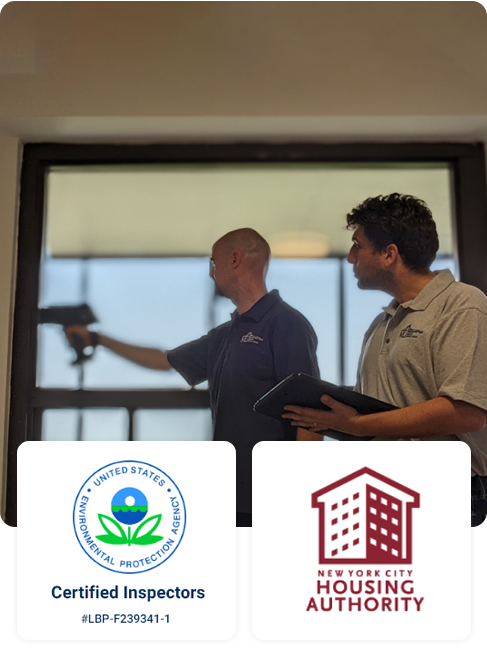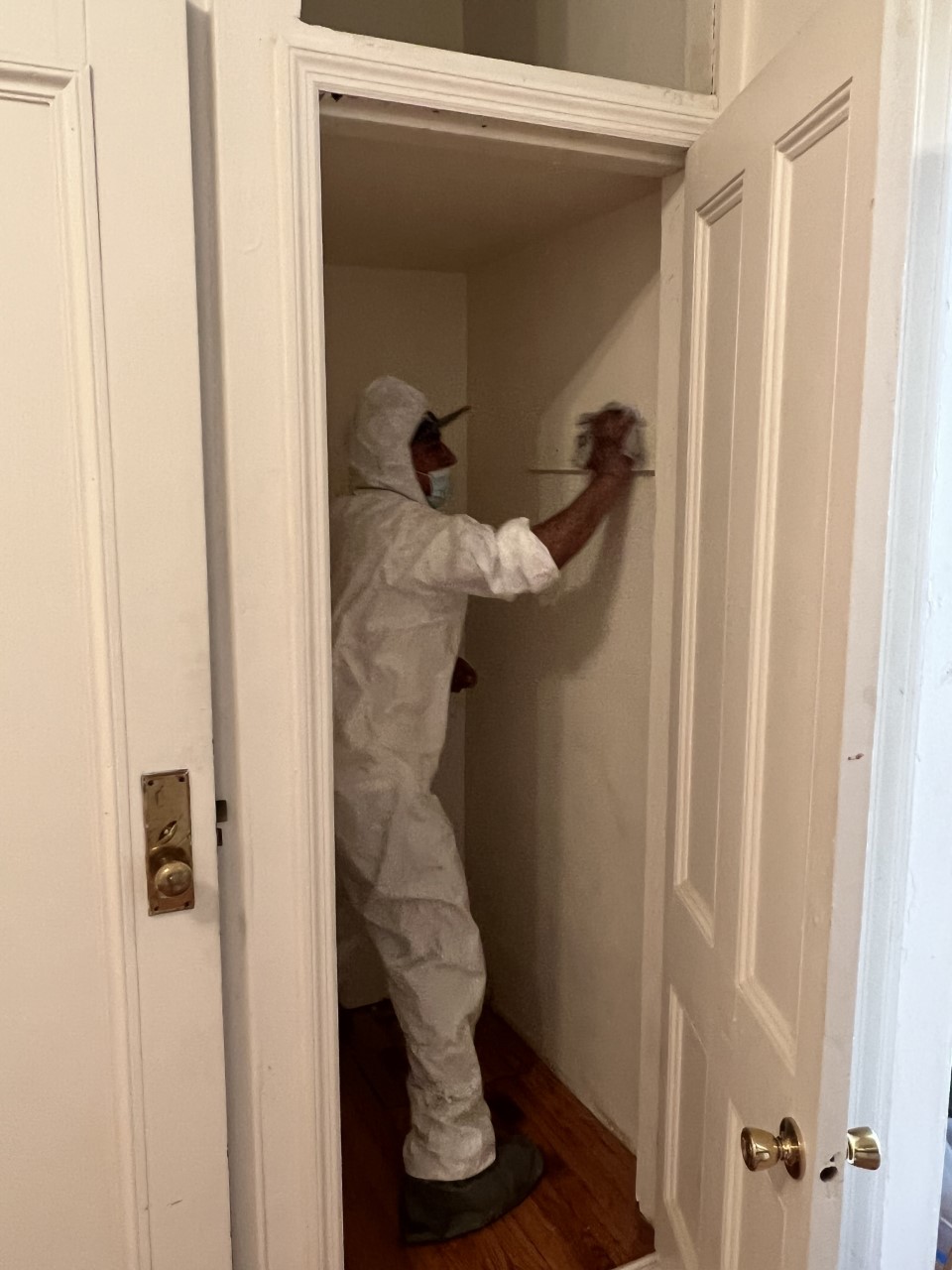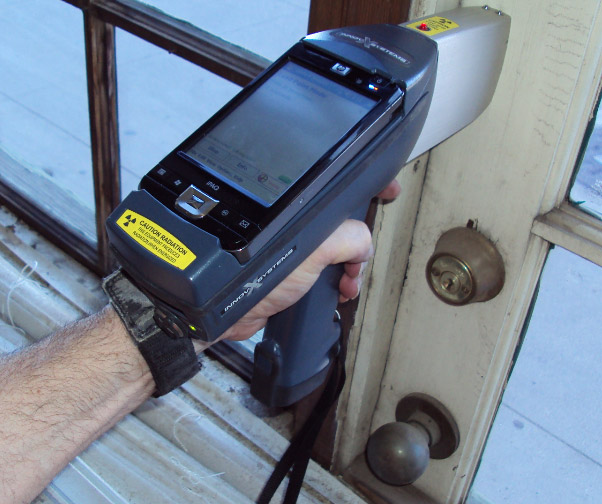DOH & HPD Lead Violation Removal NYC-- Professional Solutions for Conformity
DOH & HPD Lead Violation Removal NYC-- Professional Solutions for Conformity
Blog Article
Crucial Devices and Approaches for Reliable Lead Infraction Cleanup
Addressing lead infractions effectively requires a thorough method that mixes the right tools with tactical techniques. Concurrently, the use of specialized cleaning tools, such as HEPA vacuums and lead-specific cleansing representatives, is crucial for thorough pollutant elimination. Effective containment techniques, consisting of plastic bed linen and negative air pressure systems, are necessary to prevent the spread of dangerous products.
Individual Safety Equipment
Personal protective equipment (PPE) is a crucial component in the effective management of lead contamination cleanup. The essential PPE for lead cleanup consists of respirators, safety garments, handwear covers, and eye security.
Respirators, specifically those geared up with HEPA filters, are essential for filtering system airborne lead fragments, stopping inhalation. Safety clothes, consisting of coveralls and disposable suits, stops lead dust from sticking to workers' garments, minimizing the risk of second contamination.
Furthermore, strenuous training on the right use and maintenance of PPE is essential. Workers must be informed on donning and doffing procedures to stay clear of contamination. Regular examinations and replacements of PPE elements are necessary to preserve their safety capabilities, making sure a safe and certified cleaning operation.
Specialized Cleanup Equipment

An additional vital device is the wet/dry vacuum, which can efficiently cleanse up both dirt and liquid pollutants. These vacuum cleaners often include HEPA filters to give an additional layer of security. Damp cleans or tack towels are also important for surface area cleansing; they are specifically developed to catch and hold lead fragments, reducing the risk of spreading contamination.
For more persistent down payments, specialized lead-removal cleansing representatives are called for. These representatives are developed to damage down lead fragments, making them less complicated to remove. Scrub brushes with durable bristles can help in this process, particularly on harsh surface areas where lead dirt often tends to stick extra highly.
In addition, encapsulants are made use of to secure lead-contaminated surface areas, protecting against the launch of lead dirt. These specialized paints and coatings are designed to follow various substrates, providing a long-term solution for lead control.
Reliable Control Techniques
Efficient containment techniques are important in reducing the spread of lead contamination during cleanup tasks. Applying durable containment techniques guarantees that lead particles do not move to untouched areas, thus protecting both employees and the setting. One main method is using plastic bed linen to seal polluted areas. Heavy-duty polyethylene obstacles can be set up from floor to ceiling to produce a controlled job location, dramatically decreasing the threat of air-borne lead dirt dispersal.

To enhance containment, encapsulants can be applied to surfaces that are not being gotten rid of or disturbed. These specialized layers bind lead dirt, lowering its schedule for resuspension. Additionally, all personnel have to wear click reference appropriate Personal Safety Equipment (PPE), including respirators and non reusable matches, to protect against contamination spread.
Safe Disposal Practices
Ensuring safe disposal techniques is an essential element in the management of lead contamination clean-up. Proper disposal minimizes the threat of lead coming back the atmosphere and jeopardizing public health (DOH & HPD Lead Violation Removal NYC).
Transferring lead waste requires adherence to strict guidelines. Utilizing licensed contaminated materials providers makes sure that the products are taken care of sensibly. Documents, including materializes describing the kind and quantity of waste, must come with shipments to track the waste from the site of beginning to its last disposal destination.
Designated contaminated materials disposal facilities are equipped to deal with lead-contaminated materials safely. These Lead Paint Removal Service facilities commonly utilize advanced techniques such as stablizing, solidification, or chemical treatment to neutralize the lead before disposal. Landfilling in specialized, lined locations that prevent leachate from contaminating groundwater is a typical practice for final disposal.
Normal training for employees associated with lead garbage disposal is critical to preserve security requirements and avoid accidental direct exposure. By sticking to these techniques, organizations can substantially minimize the environmental and wellness effects connected with lead contamination.
Regulatory Compliance Tips

Sticking to regulatory compliance is paramount in the successful implementation of lead contamination cleaning. Understanding and following government, state, and neighborhood policies useful reference makes certain not just the security and health of individuals however likewise the legal and economic well-being of the clean-up organization. The Environmental Security Firm (EPA) sets rigid requirements, such as the Lead Renovation, Repair, and Paint (RRP) Guideline, which mandates appropriate certification and training for professionals managing lead-based tasks.
Conformity begins with a comprehensive analysis of relevant laws and regulations. Organizations needs to remain upgraded on any legal adjustments, which can be facilitated via regular training sessions and registering for industry updates. Documents is another vital compliance facet; keeping detailed documents of all tasks, including evaluation records, staff member training logs, and disposal materializes, is vital.
Moreover, engaging with certified lead assessors or run the risk of assessors ensures that lead hazards are appropriately determined and mitigated. Employers need to enforce using Individual Safety Devices (PPE) and ensure that safety and security procedures are purely followed. Clear communication with stakeholders, consisting of workers, clients, and regulatory bodies, will certainly cultivate a society of conformity and liability, eventually contributing to a safer and extra reliable lead clean-up procedure.
Conclusion
Effective lead offense cleaning requires the assimilation of specialized tools and critical techniques to make sure security and efficacy. Utilizing HEPA vacuums, specialized cleaning up representatives, and reliable containment approaches such as plastic bed linen and unfavorable atmospheric pressure systems is imperative. Personal safety equipment (PPE) safeguards workers from direct exposure, while safe disposal practices and rigorous adherence to regulatory compliance are necessary for responsibly managing unsafe waste. Collectively, these measures considerably mitigate health and wellness risks and contribute to a cleaner setting.
Report this page